Compost from you compost heap, compost bin and indeed your HOTBIN composter can vary an awful lot.
With many HOTBIN® composters coming up to their first autumn, there will be a lot of hot compost being taken out and used in the garden. We thought it would be good idea to let you know what to expect as ‘looks can be deceptive’!
To do this we will look at several batches of compost alongside some HOTBIN composts. Suggest how they might be graded based on common expert visual assessments. Then we will take you on a journey beyond the first look to give you some insight into compost stability and maturity tests (we’ve done them for you!), discuss what happens when you dry and sieve HOTBIN compost (don’t worry no-one is suggesting you need to do this) and finally do a bit of mud pie play to demonstrate a property called ‘colloidal behaviour’’. Finally we will tie these properties back to humeric substances and suggest that what you really need to look for in fabulous compost is high humeric substance content.
This blog is a little more scientific in nature than some of our others – so if you want the headline without the science it is this:
What a compost looks like can be deceptive. HOTBIN compost is often very sticky and very moist/wet and looks lumpy and perhaps even needing further composting. Tests show rather than it being ‘poorly’ composted, quite the reverse – it appears to have a very high humeric substance content and this is good news for your soil and plants – humeric substance is known as ‘black gold’ for a reason!
If your compost looks like (Fig 4&5), or even (Fig 6) below it is OK to dig in to your soil and does not need ‘more composting’. If you only want ‘fine’ particles of compost e.g. looking like (Fig 1) or (Fig 2) – the solution is fairly simple – dry your compost and then sieve it – you will surprised by how much fine material there is in HOTBIN Compost.
Our analysis tour includes;
1. Visual inspection
2. Carbon / nitrogen maturity test
3. Visual after drying and sieving
4. Pliability / colloidal behaviour
5. Humus test
6. Result to quality – is it fabulous?
1. Visual inspection – Below are 6 samples of compost
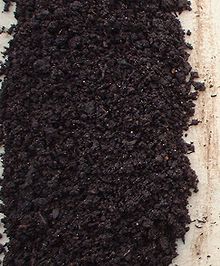
(Fig1) Vermicompost

- (Fig2) Garden centre compost laid out dry
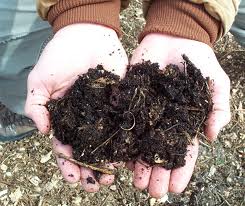
(Fig 3) Typical cold compost
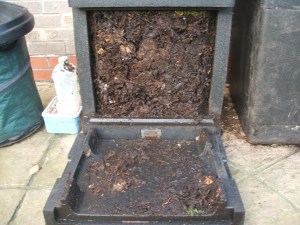
- (Fig4) HotBin compost at 3 Months
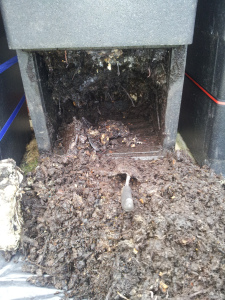
(Fig5) HOTBIN compost that is it too wet
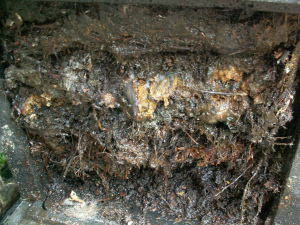
(Fig6) HOTBIN compost that has gone
anaerobicNow in our earlier blog (good, bad or fabulous compost) we outlined details on how different experts defined good compost. If we asked this group of experts to visually judge the samples above here is what we would expect:
(Fig1) Vermicompost – looks fine and rich, super
(Fig2) Garden centre compost laid out dry – looks very fine and free flowing, uniform and has probably been sieved
(Fig 3) Typical cold compost – looks mature, maybe 2 years old and as expected,
[…] that how compost looks and feels can vary a lot. Take a look at the post which talks about how HOTBIN compost will look . Remember you are recycling a variety of organic matter to great something wonderful for your […]
One thing you’ve not mentioned is the quanties and the types of materials being put into the Hotbin. I clicked on this blog post because I’ve just scraped out the bottom 20 cm from my very full Hotbin and decided they needed further maturation.
My ‘problem’ if indeed it is one, is that I have access to vast quantities of fruit and veg, and, fortunately, sawdust and shredded hedge clippings. I could easily fill the Hotbin every couple of days… I therefore am not a ‘normal’ user.
I believe the elevated temperatures, which cause (and are caused by) a faster bacterial activity, use up oxygen faster than it can diffuse into the pile; therefore I am getting some anaerobic pockets, which don’t break down into compost as fast as better oxygenated materials.
So, I’ve taken out the bottom layer, on three occasions now, and put it into a nearby ‘dalek’ cold composter, to go aerobic again and to mature for a while.
I am happy with my Hotbin and do recommend it to people who ask me as a York Rotter Master Composter. I think if used in a more average way, it should make compost pretty well. I don’t know of ANY ‘fast compost’ system which doesn’t benefit from letting the fast composted materials mature for a good length of time after the initial decomposition.
Hi John
You have done more batches of compost than most of us put together. The following might help – if nothing else try a few tests to tweak your recipes to see if they help
Thank you… I’ll follow up some of these ideas.
[…] This is ready to take out and use. If you leave it longer it will compress further and eventually airflow will be severely restricted which will prevent the upper layer in the HOTBIN getting above 60C. If you are worried the compost looks lumpy and too rough – please visit the post on ‘looks can be deceptive’. […]
Google…
I am no expert but I am having problems about excess water content as I fill my hotbin with mainly grass cuttings, kitchen scraps and dead cut flowers. I put in two handfuls of woodchip for every caddy of grass clippings but this has not been enough for me. I also use shredded office paper. I have just switched to a ‘cross-cut’ shredder as this cuts the paper / cardboard into tiny rectangles rather than long strips. I found it very difficult to mix paper shredded into strips with the rest of the compost – it tends to just wrap about itself.
Everyone has to find there own mix & balance with a HOTBIN depending on how wet the waste is that they are adding.
This is a very useful … but long post in our online FAQ about how to manage excess water in a HOTBIN.
http://www.hotbincomposting.com/boards/t/596/i-have-water-leaking-from-the-mesh-plate-bottom-of-the-hotbin-the-air-inlet-is-this-ok.aspx
This is usually a really great site content, im delighted I came across it. Ill be back off the track to look at other reports that.
I don’t write many comments, but i did a few secharing and wound up here Add Compost For Soil Improver :: Easy Composter. And I actually do have 2 questions for you if you do not mind. Could it be only me or does it look as if like some of the comments come across as if they are left by brain dead individuals? And, if you are posting on additional places, I would like to follow anything new you have to post. Would you make a list of every one of your communal sites like your linkedin profile, Facebook page or twitter feed?
Go to http://www.hotbincomposting.com. Follow the links to our FAQ section. Email us any specific questions from the ask a question page. Thanks HOTBIN team
can the fluid which leaks from the bin be collected and used as a liquid fertilizer
I simply want to mention I am all new to blogging and absolutely loved this web page. More than likely I’m want to bookmark your blog . You definitely have really good article content. Appreciate it for sharing your web page.
I have a compost bin we’ve been using for 2 years now works great! We use sehrdded junkmail for our chicken bedding (which goes into our compost), also a bit of sehrdded junk mail can be used as browns too. (make sure to tear out any plastic windows from envelopes 1st).I don’t use a dedicated bin for kitchen scraps. I just use a bowl or tupperware on the counter & fill-up with veggie peels, ends, etc. and bring out to the compost bin after each meal as part of my kitchen clean-up. I don’t live where it gets cold though, and our compost bin is pretty close to the house as well.Heart and Haven recently posted..
[…] (We have already blogged on the topic of what makes good compost and what it look like – you may find this blog post useful). […]
[…] If you want to know more about how compost looks and feels please refer to our post ‘Looks can be deceptive‘. […]